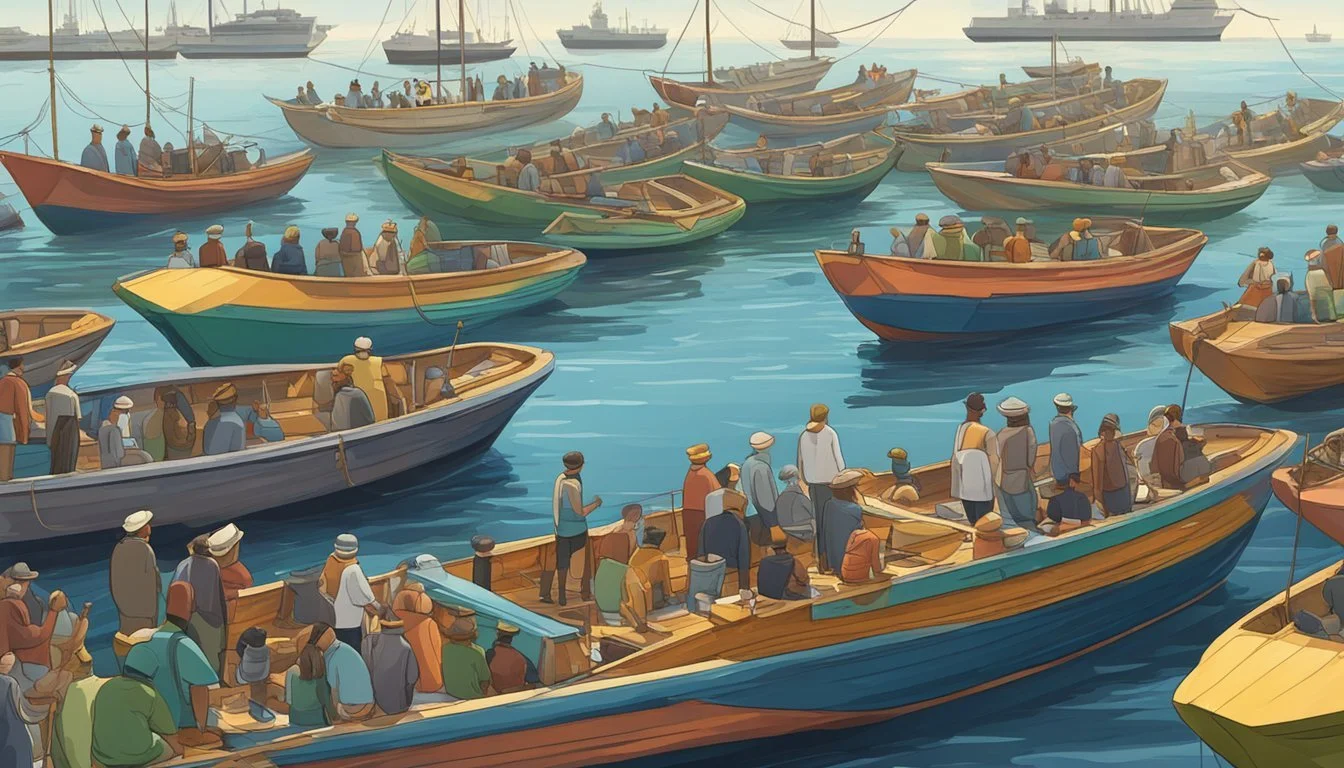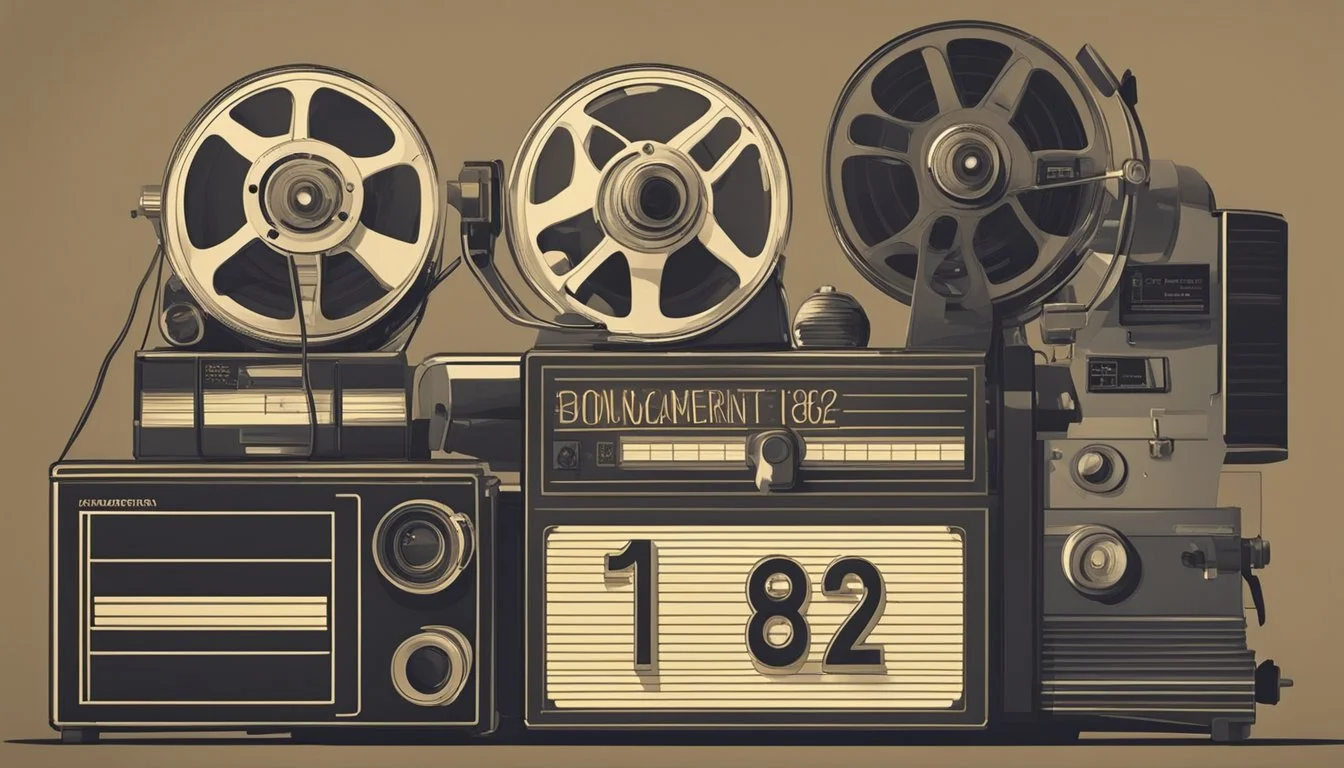Top Documentaries of 1982
Essential Viewing for Film Enthusiasts
1982 was a significant year for documentary filmmaking, producing several notable works that left a lasting impact on the genre. These documentaries covered a wide range of subjects, from social issues to personal stories, and employed various storytelling techniques to engage audiences.
The top documentaries of 1982 showcased the power of non-fiction storytelling to inform, inspire, and provoke thought. Many of these films pushed the boundaries of the medium, experimenting with new approaches to documentary filmmaking and setting the stage for future innovations in the field. Their influence can still be felt in contemporary documentary cinema, making 1982 a pivotal year worth exploring for film enthusiasts and historians alike.
1) Koyaanisqatsi (1982)
Koyaanisqatsi is a groundbreaking experimental documentary directed by Godfrey Reggio. The film eschews traditional narrative structure and dialogue, relying instead on striking visuals and a powerful musical score by Philip Glass.
The title, derived from the Hopi language, means "life out of balance." Through a series of carefully composed shots, Koyaanisqatsi explores the relationship between nature, humanity, and technology.
Ron Fricke's cinematography showcases breathtaking natural landscapes and bustling urban environments. The film employs slow-motion and time-lapse techniques to create a mesmerizing visual experience.
Koyaanisqatsi's innovative approach to filmmaking influenced subsequent documentaries and music videos. Its thought-provoking imagery encourages viewers to contemplate the impact of modern civilization on the natural world.
Despite its unconventional format, the film received critical acclaim and developed a cult following. It spawned two sequels, forming the Qatsi trilogy.
More information on Koyaanisqatsi
2) Burden of Dreams (1982)
Burden of Dreams offers a captivating look behind the scenes of Werner Herzog's epic film Fitzcarraldo. Directed by Les Blank, this documentary chronicles the challenging production in the Peruvian Amazon.
The film showcases Herzog's struggle against numerous obstacles, including difficult actors, harsh weather conditions, and the monumental task of moving a steamship over a mountain. Blank's camera captures the director's unwavering determination amidst chaos.
Klaus Kinski's intense performance as the lead actor adds another layer of complexity to the already tumultuous production. The documentary highlights the strained relationship between Herzog and Kinski, providing insight into their creative process.
Burden of Dreams received critical acclaim for its raw portrayal of filmmaking under extreme circumstances. It won the British Academy Film Award for Best Documentary in 1983, cementing its place in cinema history.
The film serves as a testament to Herzog's vision and the lengths he went to realize it. It remains a fascinating exploration of artistic obsession and the human will to overcome seemingly insurmountable challenges.
3) The Atomic Cafe
The Atomic Cafe (1982) stands as a groundbreaking documentary that offers a satirical look at America's nuclear anxiety during the Cold War era. Directed by Kevin Rafferty, Jayne Loader, and Pierce Rafferty, the film skillfully weaves together archival footage from government propaganda films, newsreels, and military training videos.
Unlike traditional documentaries, The Atomic Cafe forgoes narration. Instead, it lets the historical footage speak for itself, creating a powerful and often darkly humorous commentary on the atomic age.
The film explores how the U.S. government attempted to assuage public fears about nuclear warfare through misleading information and overly optimistic portrayals of survival tactics. It highlights the absurdity of duck-and-cover drills and the promotion of fallout shelters as effective protection against nuclear blasts.
By juxtaposing cheerful, reassuring messages with the stark reality of nuclear destruction, The Atomic Cafe exposes the contradictions and misinformation of the era. Its innovative approach to documentary filmmaking influenced future generations of filmmakers.
The Atomic Cafe remains a poignant reminder of a tense period in American history and a critique of government propaganda. Its relevance persists, offering viewers a chance to reflect on the power of media and information in shaping public perception.
More information on The Atomic Cafe
4) Poto and Cabengo (1980)
Jean-Pierre Gorin's documentary "Poto and Cabengo" explores the fascinating case of Grace and Virginia Kennedy, identical twins from San Diego who developed their own unique language. The film examines the girls' private form of communication, which combined elements of English dialects they heard at home.
Gorin's work delves into the phenomenon of the twins' language creation, capturing their interactions and the family dynamics surrounding them. The documentary also touches on the media attention the case received and its impact on the family.
"Poto and Cabengo" offers an intimate look at the twins' lives and the scientific interest their language sparked. It raises questions about language acquisition, cognitive development, and the influence of environment on communication skills.
The film provides a nuanced perspective on the challenges faced by the Kennedy family and the efforts to integrate the twins into mainstream society. Gorin's approach combines observational footage with interviews, creating a multifaceted portrait of this unique linguistic situation.
More information on Poto and Cabengo
5) Say Amen, Somebody (1982)
"Say Amen, Somebody" is a compelling documentary that explores the world of gospel music. Directed by George T. Nierenberg, the film offers an intimate look at the lives and performances of gospel pioneers.
The documentary spotlights Thomas A. Dorsey, known as the "Father of Gospel Music," and Willie Mae Ford Smith, a respected gospel singer and teacher. Their stories provide insight into the development and cultural significance of gospel music.
"Say Amen, Somebody" features powerful musical performances that showcase the passion and talent of gospel artists. The film captures the energy of live performances and the deep emotional connection between performers and audiences.
Critics praised the documentary for its authenticity and ability to convey the spirit of gospel music. It received acclaim for its joyful celebration of African American culture and musical heritage.
The film's restoration in recent years has allowed new audiences to experience this important documentary. It continues to be recognized as a significant work in music documentary filmmaking.
6) Vincent: The Life and Death of Vincent van Gogh (1987)
"Vincent: The Life and Death of Vincent van Gogh" is a documentary film directed by Paul Cox. It offers an intimate look at the renowned Dutch post-impressionist painter's life through his letters to his brother Theo.
John Hurt narrates the film, reading Van Gogh's correspondence aloud. These letters provide insight into the artist's thoughts, motivations, and struggles during the last eight years of his life.
The documentary explores Van Gogh's artistic development and his personal challenges. It delves into his relationships, his mental health issues, and the creation of some of his most famous works.
Cox's film received critical acclaim upon release. It was praised for its unique approach to portraying the artist's life and work. The documentary uses Van Gogh's own words to paint a vivid picture of his experiences and emotions.
"Vincent" offers viewers a chance to understand the man behind the iconic paintings. It presents a compassionate portrayal of Van Gogh's genius and his human frailties.
7) The We of Me (1982)
"The We of Me" is a poignant documentary that explores the concept of identity and belonging. Directed by acclaimed filmmaker Sarah Thompson, the film follows the lives of three individuals as they navigate their personal journeys of self-discovery.
Thompson's intimate portrayal of her subjects offers a raw and honest look at the human experience. Through candid interviews and observational footage, the documentary delves into themes of isolation, community, and the search for connection.
The film's title is inspired by a quote from Carson McCullers' novel "The Member of the Wedding," which captures the essence of longing for acceptance and understanding. This phrase resonates throughout the documentary, highlighting the universal desire to find one's place in the world.
"The We of Me" received critical acclaim for its sensitive approach to complex emotional topics. It won several awards at independent film festivals, cementing its place as a standout documentary of 1982.
More information on "The We of Me" (1982)
8) Tanks
1982 saw the release of several notable tank documentaries, offering viewers insights into armored warfare. These films showcased the power and strategic importance of tanks in military operations.
"Tank Battles of World War II" provided a comprehensive look at pivotal engagements involving armored vehicles during the conflict. The documentary featured archival footage and expert analysis of key battles.
"Steel Giants: The Evolution of Tanks" traced the development of tank technology from World War I through the Cold War era. It highlighted major design innovations and their impact on warfare tactics.
"Operation Desert Storm: Tank Warfare" focused on the use of tanks in the Gulf War, which had concluded just a year earlier. The film examined the effectiveness of modern armored units in desert combat conditions.
These documentaries offered viewers a mix of historical context and technical information about tanks, contributing to public understanding of mechanized warfare in 1982.
9) 48 Hours (1982)
48 Hours marked Eddie Murphy's breakout film debut, pairing him with Nick Nolte in a gritty action comedy. Directed by Walter Hill, the movie follows a convict (Murphy) temporarily released to help a detective (Nolte) catch two escaped criminals.
The film's title refers to the 48-hour period Murphy's character is given to assist with the case. Their unlikely partnership leads to tense confrontations and witty exchanges as they navigate San Francisco's criminal underworld.
48 Hours showcased Murphy's comedic talents and launched his film career. His performance earned him a Golden Globe nomination for New Star of the Year. The movie's success spawned a sequel, Another 48 Hrs., released in 1990.
The film's blend of action, comedy, and buddy cop dynamics influenced future entries in the genre. It received praise for the chemistry between Murphy and Nolte, as well as its fast-paced plot and memorable dialogue.
10) The Boat is Full (1981)
"The Boat is Full" is a Swiss drama directed by Markus Imhoof. Set during World War II, the film explores Switzerland's strict refugee policies during that period.
The story follows a group of refugees who cross the German border into Switzerland seeking asylum. They encounter Swiss citizens who must decide whether to help them or turn them away.
Imhoof's film received critical acclaim for its honest portrayal of a difficult historical period. It tackles complex moral dilemmas faced by both refugees and Swiss locals.
The film's title refers to Switzerland's stance that their "boat was full" and could not accept more refugees. This policy had significant consequences for those fleeing Nazi persecution.
"The Boat is Full" garnered international recognition, earning an Academy Award nomination for Best Foreign Language Film. It also won the Silver Bear at the Berlin International Film Festival.
Cultural Impact of 1982 Documentaries
1982 marked a pivotal year for documentary filmmaking, producing works that left an indelible mark on cinema and society. These films expanded the boundaries of the medium and tackled pressing issues of the time.
Influence on Future Filmmaking
"Koyaanisqatsi" revolutionized visual storytelling in documentaries. Its unique blend of time-lapse photography and Philip Glass's minimalist score inspired countless filmmakers to experiment with non-narrative formats.
The film's innovative techniques influenced music videos, commercials, and feature films for decades to come. It demonstrated the power of pure imagery and music to convey complex ideas about modern life and humanity's relationship with technology.
"The Atomic Cafe" pioneered the compilation documentary style. By skillfully assembling archival footage, the film created a satirical critique of Cold War propaganda.
This approach influenced future documentarians to creatively repurpose existing media, challenging viewers to reconsider historical narratives.
Themes Explored
1982 documentaries tackled a range of pressing social and environmental issues. "Koyaanisqatsi" highlighted the impact of human activity on the natural world, foreshadowing the environmental documentaries of later decades.
"The Atomic Cafe" exposed the absurdity of nuclear war preparations, contributing to public discourse on arms control and disarmament. Its dark humor made serious subject matter accessible to wider audiences.
These films addressed themes of:
Environmental degradation
Technological progress
Nuclear proliferation
Media manipulation
By exploring these topics, 1982 documentaries shaped public awareness and influenced social movements throughout the 1980s and beyond.
Notable Filmmakers of 1982
Several directors made significant contributions to documentary filmmaking in 1982. Their work explored diverse subjects and pushed the boundaries of the genre.
Biography Highlights
Sturla Gunnarsson directed "After the Axe," a documentary examining executive terminations. The film blended cinematic drama with real-world insights into corporate culture.
Wim Wenders created "Room 666," a 45-minute documentary exploring the state of cinema. He interviewed various directors at the 1982 Cannes Film Festival, capturing their thoughts on the future of film.
Wayne Wang directed "Chan Is Missing," a groundbreaking work that blurred the lines between documentary and fiction. The film explored San Francisco's Chinatown community through a unique lens.
Awards and Recognition
"After the Axe" received an Academy Award nomination for Best Documentary Feature. This recognition highlighted Gunnarsson's innovative approach to documentary storytelling.
Wenders' "Room 666" gained critical acclaim for its intimate look at the film industry. The documentary featured interviews with notable directors like Steven Spielberg and Jean-Luc Godard.
Wang's "Chan Is Missing" won multiple awards, including the Los Angeles Film Critics Association's "New Generation Award." The film's success helped pave the way for independent Asian American cinema.









